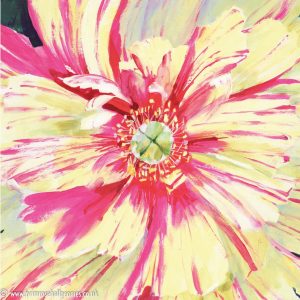Has this Valentine’s day got you stumped for words?
Never fear when flowers are near - let them blooms do the talking!
These days most of us don’t think further than the style and colour when deciding what blooms to buy.
But back in Victorian times flowers had a lot to say.
THE BLOOMS SPEAK
Assigning meaning to specific flowers to communicate feelings and thoughts is known as “floriography” and it became not just a craze, but one of the main ways people chose to communicate at that time.
Although floriography dates back to the 1700s in Turkey, the Victorian era was a time when this form of communication became really popular. This happened after Lady Mary Wortley Montagu visited Turkey and discovered the way harem girls communicated with each other – sending secret messages via flowers.
She wrote:
“There is no colour, no flower, no weed, no fruit, herb, pebble, or feather, that has not a verse belonging to it; and you may quarrel, reproach, or send letters of passion, friendship, or civility, or even of news, without ever inking your fingers.”
WHAT THE BLOOMS SAY
So if you received a bunch of flowers like this:
Red roses (passion and love)
+ Dianthus (love, affection, gratitude and admiration)
+ Blush Tulips (pure, deep, unconditional love/commitment/eternal bonds)
+ Pink Limonium (success, beauty, sympathy, and remembrance. Also ''I miss you''. Called the “everlasting flower” because of the pretty calyx that stays on the flower even after the flower has dried up)
You could be sure potential love was on the horizon…
But be careful because the meaning can differ depending on the colour. So while you’d be happy to receive the blush tulips above, you might not be so pleased with yellow tulips - they’ve been said to say “hopeless love”….
When it comes to vegetables, you’d be well chuffed if presented with a bunch of asparagus as they've been associated with luxury, prosperity, abundance and desire.
And if someone gave you lemons you'd be forgiven for being confused. On one hand they’ve come to symbolise luxury, love and longevity but also sourness and disappointment.
So why not send a bunch of flowers (with asparagus) instead of that text? Much more fun. And make your own card with lemons on…?
THE BUNCHES WE GOT
You can’t go wrong with roses and we’ve got bunches of bouquets with roses in to help you get the message across this Valentine’s Day.
Here’s a few of them (pictured right):
Passion
Velvet Red Roses
+ Complimentary greenery
Romeo & Juliet
Red Roses
+ pink Limonium
Love Actually
Red Roses
+ pink Limonium
+ Foliage
P.S. I Love You
A red Rose
+ light pink Sweetheart Spray Roses
+ Dianthus
+ blush Tulips
+ Limonium
+ foliage
Which one's your favourite?
Just click on a pic and it'll take you straight to the shop.
Happy picking!
P.S. Wasn't 'Love Actually" just the best movie? You can't go wrong with a cast of Emma Thompson, Hugh Grant, Liam Neeson and Colin Firth. Well maybe you could but then there's always flowers to make it better.















